Dreaming of a world where their children soar to new heights, parents often wonder, “How can I cultivate my child’s curiosity and creativity while fostering a passion for technology?” The answer lies in the exhilarating world of drones.
The Ultimate Guide to Drones for Kids is a comprehensive resource designed to empower parents with the knowledge they need to introduce their little adventurers to the wonders of drone technology.
Let’s embark on an unforgettable journey into the limitless skies of possibility.
Table of contents
Introduction
A drone is an aerial vehicle operated by a pilot’s remote commands or works on software for independent flight, which means it doesn’t need a pilot to fly. It’s also called a UAV (Unmanned Aerial Vehicle). A drone can either be pre-programmed or remotely controlled by a pilot.
Many drones carry cameras for collecting spatial images and propellers with different flight patterns. Some drones are made for kids to play and have fun activities for kids with remote controls. Drones offer a plethora of benefits for kids, making them an invaluable tool for their growth and development.
Firstly, drone flying instills a sense of responsibility and discipline as children learn to operate the technology safely and responsibly. It also enhances hand-eye coordination and spatial awareness, improving their motor skills. Drones promote creativity and problem-solving abilities, encouraging kids to think critically while planning flights and maneuvering obstacles.
They provide a gateway to STEM education, allowing children to explore concepts in science for kids, technology, engineering, and mathematics in a hands-on and engaging manner. Moreover, drone flying fosters a sense of adventure and exploration, sparking curiosity and a passion for discovering the world from a different perspective.
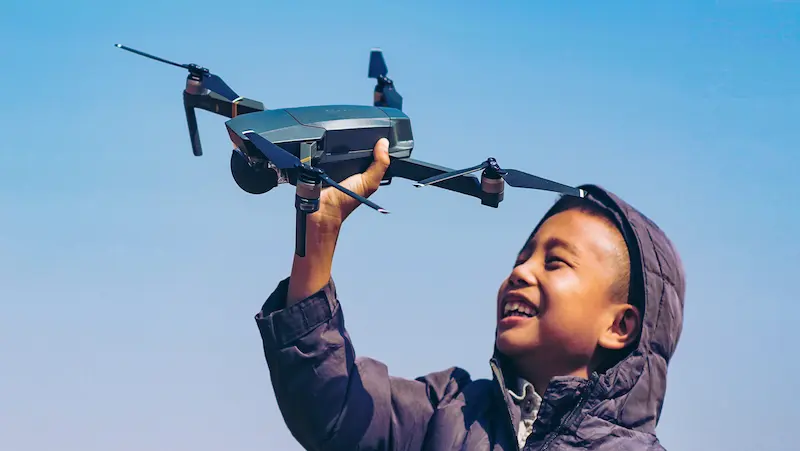
Safety Tips for Flying Drones with Kids
Before you and your kids take on this aeronautic hobby, ensure your family knows all the safety risks and government regulations for flying a drone.
1. Registration of your new drone with the FAA
The registration process is online and costs only $5. Above all, registration is mandated by federal law. Not registering your UAS (if it meets said weight requirements) could lead to civil and criminal penalties of up to $27,500 and $250,000, respectively. Once registered, ensure your FAA registration certificate is with you to operate the drone.
2. Insure your drone
A more significant concern, however, is an accident involving your drone. For this, joining the Academy of Model Aeronautics. Membership costs only 58 Dollars a year and includes 2.5 million Dollars in liability protection if your drone destroys any property or injures someone. You can also have individual liability insurance coverage from a private insurance company, but it can be more expensive.
3. Ensure your family knows all UAS safety rules
UAS rules are continuously getting modified, so be cautious and stay updated. Lawmakers are rigid about where these drones can be flown and if any mishaps happen could lead to more strict regulations. Therefore, before your family’s drone lifts off, check that everyone knows and follows all UAS rules.
Below are a few essential guidelines that need to be taken care of:
● Never allow your kids to fly drones near other aircraft or airports.
● Don’t fly them over crowds of people, stadiums, national parks, or any space where they can risk public safety.
● Don’t fly above 400 feet, and better to avoid surrounding objects.
4. Fly your drone in an open area first and make boundaries
You and your youngster must test your aviation skills in a very open environment, such as a football field or a park. So you can avoid trees, people, and power lines. Flying drones in the morning is good since the winds are lighter with few people around. If your child is flying the drone alone, create boundaries to tell them where they can fly.
5. Age recommendations and supervision
Kids over four can fly a drone with supervision. The right age for a child to fly a drone on their own is about the age of 8 for toy drones and over the age of 13 for larger drones that must be registered with the FAA.
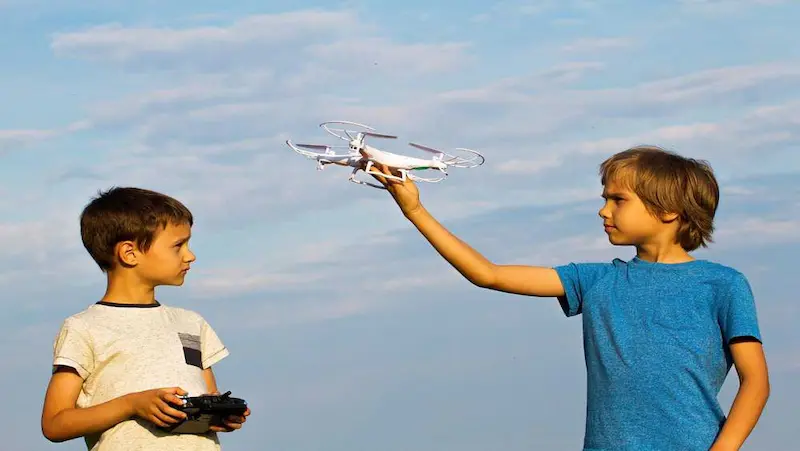
Features to Consider When Buying a Drone for Kids
Drones are available in various shapes and sizes, and not all are ideal for children. Some of them should never be given to children as they might be dangerous to children. Toy drones may look simple and easy, but in the wrong hands, they can be hazardous.
Parents who want to buy a drone for their kids to play with as a toy need to consider these tips on choosing drones for children under 12 years old:
1. Durability and build quality
Durability is essential to buying a drone for your kid. As kids can easily crash their drones into walls, trees, and the ground, you need something that can withstand dents. Toy drones for kids are mostly made of plastic, and so are not very durable. If you’re looking for a drone that should be durable, you’ll need to get something made of metal or carbon fiber.
2. Ease of use and controls
The drones have a controller that is easy to use and may also have a phone holder on it, prop guards, and batteries providing flight time for each propeller. Drones are foldable, which makes them even tinier. They can also have a tiltable camera to tilt it in all directions. The camera is also of good quality for the price we get these drones.
3. Flight stability and altitude limits
Legally, we can fly a drone within 400 feet or above 400 feet, but not more than that. The FAA says drone operators must always keep their drones in sight and not fly over 400 feet. The FAA’s Part 107 Rules says you can fly your drones 400 feet above the ground.
If you fly as a hobby, not-for-profit, and have been flying drones for less than two years, then you can fly up to 20 miles away only from your takeoff point, and remember, this rule cant be refused.
If you’re flying for commercial use and who is not using the drone for research or education purposes, then they must stay within 400 feet of any structure (including people) and five miles away from airports.
4. Camera and video capabilities
Drones with a camera that sits on a gimbal and can capture still images of 20-megapixel resolution or better. If you want high-resolution photos, use higher megapixels and large camera sensors to capture more precise, detailed images. For videos, you can go with 4K or better megapixels.
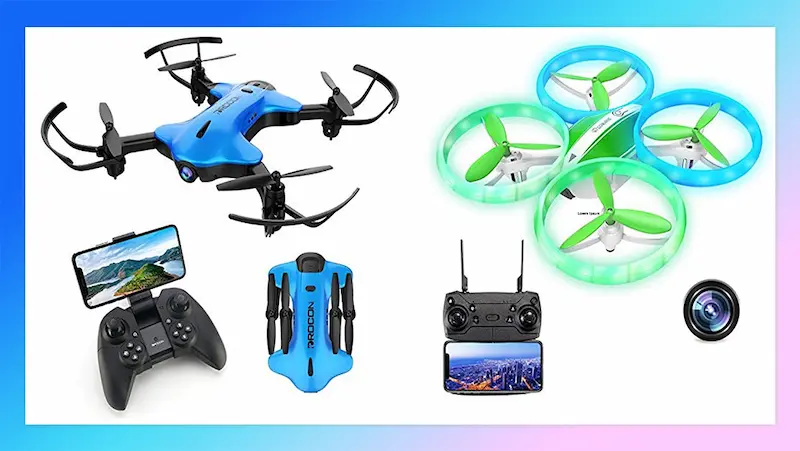
Best Drones Recommended for Kids
1. Holy Stone Mini Drone: Great for beginners to learn to fly a drone. Made for indoor use, it comes with three batteries, No camera.
2. Sharper Image Glow Up Stunt Drone with LED Lights: LED lights can track it in the dark and make it fun to fly. It flies high, and Stunts are best done outdoors. Users can learn to make it tilt and flip forward or backward. It also flies impressively high, up to 150 feet.
3. Best Helicopter Drone For Kids, SYMA RC Helicopter: The SYMA RC Helicopter combines the fun of a toy helicopter with the features of a racing drone. Designed for both indoor and outdoor play, have propeller guards and a landing base to prevent damage while flying. There’s no camera, but this drone is excellent for learning to fly and practicing new stunts.
4. Propel Toys Star Wars Quadcopter X-Wing: Star Wars-designed fans can finally fly an X-Wing like the movie heroes. And if you round up a few of these flying RC spaceships, you can battle them in a laser-tag-like fight mode. It can be used indoors and outdoors, but like most beginner drones, it is not waterproof and won’t fly well in the wind.
5. Best Camera Drone For More Advanced Fliers, DJI Ryze Tech Tello Mini Drone: has a 5-megapixel camera and is much sharper than others for under $100. If you have flown other drones before, this one will be easy to learn and master. It can be fun to make it perform tricks and flips, but the Propellers are not guarded.
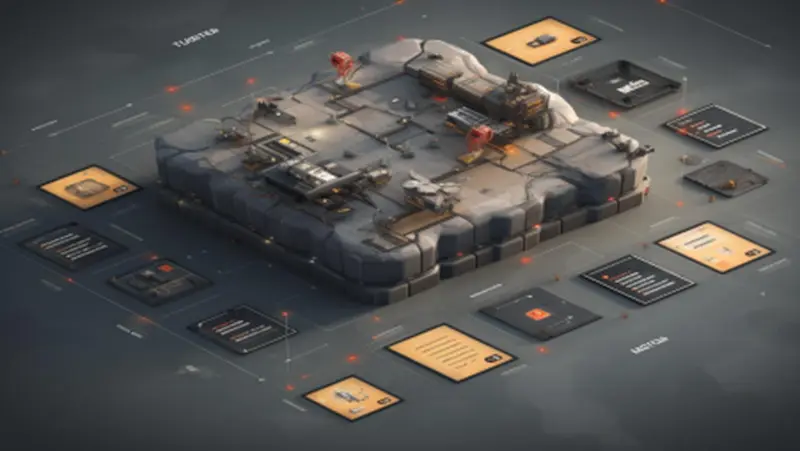
Fun and Educational Activities with Drones
Kids need to have access to quality drone education resources. These resources can help them learn the basics of drone operation, safety, and maintenance, as well as they can explore the various applications of drones in STEM fields. Some of the top drone courses and educational resources for kids are:
1. DroneBlocks:
DroneBlocks is a drone education platform that offers various courses and resources for kids. They focus on teaching drone programming to kids, flight safety, and drone operations using block-based coding, which makes it easy for kids to learn the basics of drone programming and develop their skills in a fun and interactive environment.
2. Drones in School:
Drones in School is a unique drone education program that teaches students about drone technology and engineering. Through project-based learning, students work in teams to design, build, and fly their drones. This program is an excellent way for kids to gain valuable experience in flying drones and learn about the various career opportunities in the drone industry. These drone courses and educational resources offer a variety of opportunities for kids to learn about drone technology and its applications in STEM fields.
3. Tynker:
Tynker is another excellent resource for kids of drone-based learning games for kids. This platform offers a range of drone coding courses that teach kids how to program drones using visual coding blocks. Tynker also provides various STEM drone programs and summer activities for kids, making it an excellent choice for parents and educators looking to integrate drones into their STEM curriculum.
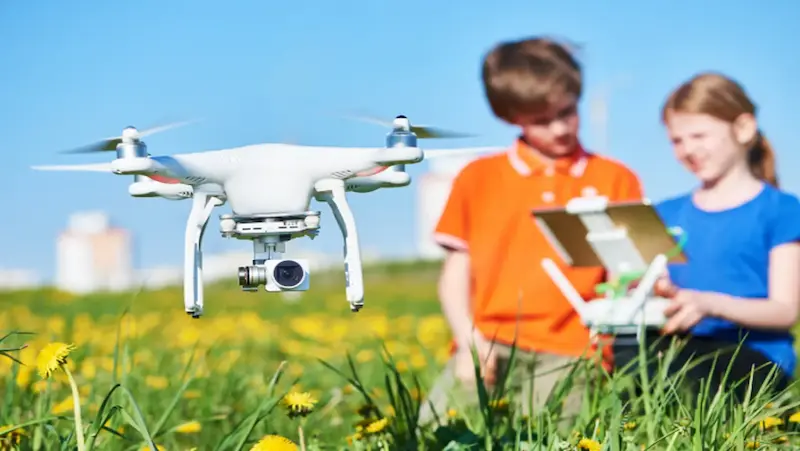
Legal and Regulatory Considerations
When engaging in recreational drone flying, it’s crucial to be aware of the legal and regulatory considerations to ensure a safe and responsible experience. Here’s an overview of drone regulations and guidelines:
1. Familiarize Yourself with Local Regulations: Research and understand the drone regulations specific to your country, state, or region. Regulations may vary in terms of age restrictions, flying locations, altitude limits, and registration requirements.
2. Register Your Drone: Some jurisdictions require drone owners to register their drones before flying. Check the regulations and follow the registration process if necessary.
3. Respect No-Fly Zones: Identify and respect designated no-fly zones such as airports, government buildings, and crowded areas. Adhering to these restrictions ensures the safety of people and property.
4. Maintain Visual Line of Sight (VLOS): Keep your drone within your line of sight at all times to ensure control and avoid potential collisions with other aircraft or objects.
5. Fly in Safe Weather Conditions: Avoid flying your drone in adverse weather conditions such as strong winds, rain, or fog, as they can impact flight stability and visibility.
6. Respect Privacy: Respect people’s privacy and avoid flying over private property without permission. Use your drone’s camera responsibly and be mindfulness activities for kids of capturing images or video games for kids of individuals without their consent.
7. Be Cautious of Wildlife: Fly drones at a safe distance from wildlife to prevent disturbing or endangering them.
8. Follow Manufacturer’s Guidelines: Adhere to the manufacturer’s instructions regarding safe and responsible drone operation. This includes properly maintaining your drone, regularly updating firmware, and understanding its capabilities and limitations.
9. Stay Updated: Keep yourself informed about any updates or changes in drone regulations to ensure compliance and safety.
By following these guidelines and staying informed about the rules and regulations, you can enjoy the recreational use of drones while prioritizing safety, responsibility, and respect for others.
Conclusion
In conclusion, drones open up a world of endless possibilities for kids, combining excitement, education, and responsibility. They offer numerous benefits, including fostering creativity, enhancing motor skills, promoting critical thinking, and inspiring a passion for STEM.
However, it is essential to prioritize safety and abide by legal regulations. By adhering to guidelines such as respecting no-fly zones, maintaining a visual line of sight, and flying in safe weather conditions, parents can ensure a safe and enjoyable drone experience for their children.
Additionally, If your child has a keen interest in robotics and automation, you’ll be glad to know that some drones offer a glimpse into the world of robotics. These advanced drones can be controlled through coding, allowing your child to understand the basics of programming and automation. Discover the fascinating world of online robotics classes for kids , online robotics for kids and see how your child can take their interest in robotics to the next level.
Drones empower young minds, allowing them to explore the skies, expand their horizons, and embark on a thrilling journey of learning and discovery. Flying Drones is a fantastic hobby that can help your kids to improve cognitive skills.
So, you can get a beginner drone for a reasonable price for your child and help them learn the basics and advanced skills of drone flying. It will be a fantastic learning experience, and they’ll have a lot of fun flying drones.
To get your hands on more such educational and free resources on coding, robotics, game development, etc., do check out the Brightchamps Blog Page now!
Unleash your child’s potential with BrightChamps and embark on a transformative educational adventure that sparks innovation, financial literacy, and technological prowess. Join us in shaping the leaders of tomorrow!
Frequently Asked Questions
Most drones are recommended for use by children over 12 years. However, some are designed specifically for younger children aged from 8 years.
Do not let your kids fly drones above 400 feet, Keep your drone in your line of sight. Do not fly over crowdy places, stadiums, or near an airport. Check out the complete guidelines as per your area.
The best drones for kids include features like Stabilization, a Single Takeoff Landing Button, and Holding Altitude Mode. You can also choose a mini drone for kids with a camera if your child wants to capture aerial images and videos.
Yes, drones can help develop STEM skills in kids by engaging them in hands-on learning experiences related to science, technology, engineering, and mathematics through flight operations, coding, and problem-solving challenges.
DJI Mini 2 SE (Best inexpensive Drone for kids), DJI Mini 3 Pro(Best Starter Drone With Obstacle Avoidance), DJI Mini 3(Best 249g Drone for Creators) and Ryze Tello(Best Drone for Kids Learning to Code).
Yes, there are drone flying competitions and clubs specifically designed for kids, providing opportunities to showcase their skills, compete in challenges, and connect with other young drone enthusiasts.

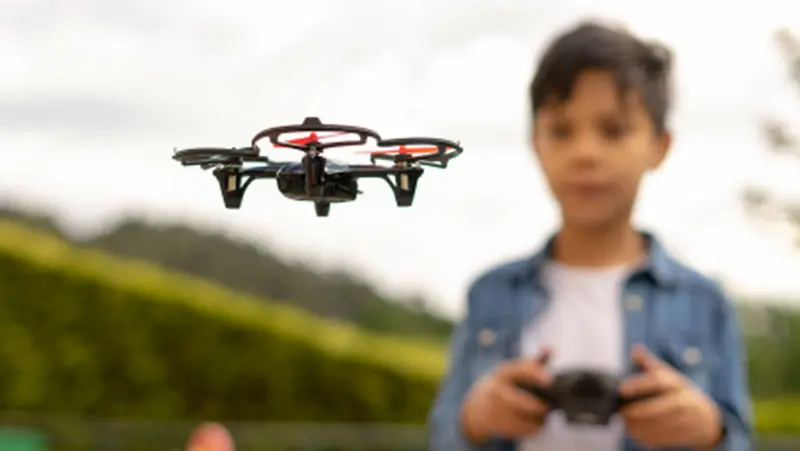
 We are an army of educators and passionate learners from BrightChamps family, committed to providing free learning resources to kids, parents & students.
We are an army of educators and passionate learners from BrightChamps family, committed to providing free learning resources to kids, parents & students.












